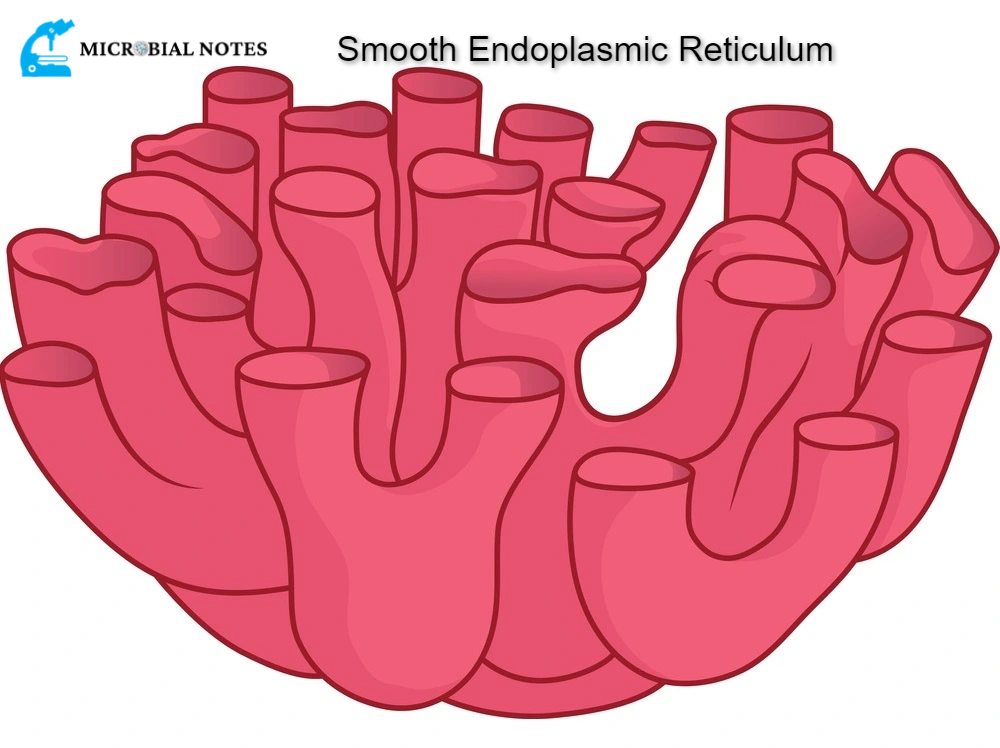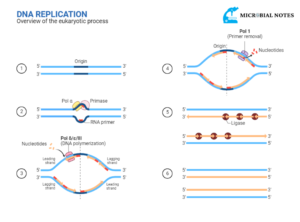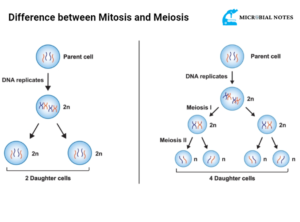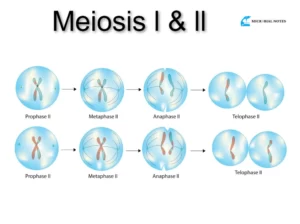Discovery of smooth endoplasmic reticulum:
Despite being one of the largest and most crucial organelles in terms of function, ER was one of those organelles that took a while to be discovered. According to reports, the French cytologist Charles Garnier and colleagues first observed ER using light microscopy in 1902. Their contemporaries did not, however, generally concur with their observations.
The endoplasmic reticulum wasn’t discovered for another 50 years, but two researchers were finally able to do so thanks to the development of electron microscopy. An organelle called the endoplasmic reticulum was originally identified in the cytoplasm of cells in 1953 by American cell scientists Keith R. Porter and George E. Palade.
The early 1960s saw the definition of the endoplasmic reticulum’s structure, make-up, and function in calcium control and muscle contraction. American cellular and molecular biologist Günter Blobel discovered in 1971 that the ER is essential for protein synthesis.
Introduction of the smooth endoplasmic reticulum:
Most eukaryotic cells have the smooth endoplasmic reticulum (smooth ER), a membrane organelle. It is a portion of the endoplasmic reticulum’s endomembrane system. The synthesis of lipids, the production of steroid hormones, the removal of toxic metabolic waste products, and the storage and utilization of calcium ions within the cell are its primary tasks.
The absence of membrane bound ribosomes sets the smooth ER apart from the other endoplasmic reticulum regions. This organelle is particularly distinctive physically and frequently consists of tubular organelles termed cisternae. Smooth ER is abundant in cells of the endocrine system, such as those in the adrenals that create steroid hormones, in excitable cells like neurons and muscle cells that use Ca2+ signaling, and in cells of the liver that metabolize toxic substances.
Structure of the smooth endoplasmic reticulum:
Cisternae, which are three dimensional polygonal networks of tubules, make up the majority of the smooth endoplasmic reticulum. They have a diameter of 30 nm for yeast and 50 nm for mammals. Many proteins are required to maintain the high curvature of these structures, including reticulons, DP1, and proteins that enhance receptor expression (REEPs).
These proteins either shape the membrane by oligomerization or through structural features that wedge themselves into the lipid bilayer. Since their suppression or deletion results in an excess of flattened sac-like structures in the ER and an almost complete lack of tubules, the presence of these proteins appears to be essential for the existence of tubular cisternae.
New tubules sprout from the sidewalls of older structures in the smooth ER, which is likewise a dynamic structure. Some tubule branches can also fuse together with the help of GTP hydrolysis. The actin and microtubule cytoskeleton of the cell determines how extensive the smooth ER network is. ER tubules can grow beside a microtubule at its plus end or glide along the cytoskeletal framework employing motor proteins.
Muscle cells and neurons are two types of cells in the human body where the smooth ER structure is very important. The interaction of the broad ER network with actin and microtubules, which extends throughout the entire cell, is directly related to the presence of the network along the neuron. It is dispersed throughout the synapse and is found in tiny dendritic spines that run the length of the slender axon. The smooth ER and mitochondria are frequently connected at the synapse.
The relationship between smooth ER and mitochondria endures even when the cytoskeleton depolymerizes and the network of tubules in the ER goes through significant morphological alterations. The sarcoplasmic reticulum, also known as the smooth endoplasmic reticulum, is a crucial site for the storage of calcium ions in muscle cells. The sarcoplasmic reticulum is crucial for the contraction of muscle fibers together with unique elements found in the plasma membrane of muscle cells (T-tubules).

Explain the function of the smooth endoplasmic reticulum.
The sER is essential for cellular metabolism. According to the cell type, several metabolic processes involving sER are involved, and they are numerous in some cell types that largely rely on sER functions.
Lipid synthesis, carbohydrate metabolism, control of intracellular calcium concentration, and drug detoxification are among the main duties of sER. Numerous enzymes involved in the manufacture of lipids, particularly phospholipids and steroids, can be found in the sER.
There is a significant quantity of sER in the cells that secrete these substances, including those in the ovaries, skin oil glands, and testes. In maintaining healthy cholesterol levels, sER is essential. Even though the endoplasmic reticulum produces very little cholesterol, the majority of the molecular machinery that controls cellular cholesterol homeostasis is found there. Transferring molecules made in the rough Endoplasmic Reticulum to the Golgi complex also involves the smooth endoplasmic reticulum.
Lipid synthesis:
The main location for lipid synthesis is the smooth endoplasmic reticulum, notably at the membrane contact sites (MCS). MCS are locations where ER membranes come into close contact with other cytoplasmic organelles, allowing for the transfer of molecules. These organelles include the Golgi apparatus, mitochondria, lysosomes, peroxisomes, endosomes, chloroplasts, and plasma membrane.
The vast majority of cellular lipids are synthesized by endoplasmic reticulum (ER) specific enzymes found in these locations of sER. Therefore, the sER has a crucial part to play in maintaining the proper balance of various lipid classes and categories, which in turn affects the cellular lipid biomass.
Signals from both inside and outside the cell are used to activate these ER-localized enzymes that are present in sER. The cellular lipids produced by the sER give the cell the membrane lipids it needs to undergo changes in shape and structure dependent on growth and differentiation. They also support the cell’s overall membrane homeostasis.
Phospholipid production happens at the membrane-contact point between the ER and mitochondria. In order to safeguard the cell and the organelles, phospholipids largely form barriers in cellular membranes. Additionally, they have a role in the control of cellular activities related to development, immunological control, and synaptic transmission.
Additionally, phospholipids are crucial for nonvesicular lipid transfer between the ER and other organelles. A family of waxy lipids known as ceramides is essential to the cell’s structure. They are also essential for cell motility, adhesion, cell cycle, and cellular signaling. The sER is where ceramides are created. As a part of the membrane of the transport vesicle, they are carried from the sER to the Golgi.
Enzymes necessary for the production of sterols and steroids are also found in sER. Due to their lipophilicity and inability to be stored in vesicles from which they may quickly diffuse, steroid hormones produced in the smooth endoplasmic reticulum are only produced as precursors when necessary.
The sex hormones of vertebrates and the numerous steroids secreted by the adrenal glands are among the steroids generated by the SER in animal cells. The smooth endoplasmic reticulum is abundant in the cells that produce and secrete these hormones, such as the cells in the testes and ovaries.
Regulation of calcium concentration:
Additionally, calcium ions are kept in the smooth endoplasmic reticulum. For instance, the sarcoplasmic reticulum, a distinct variety of smooth endoplasmic reticulum, plays a crucial role as an intracellular calcium buffer zone in muscle cells. Calcium ions rush through the endoplasmic reticulum membrane into the cytosol in response to a nerve impulse that stimulates the muscle cells, causing the contraction of the muscle cells. Other cell types respond to calcium ions produced from the smooth endoplasmic reticulum by secreting vesicles containing freshly made proteins, among other things.
Drug detoxification:
A sizable family of enzymes called cytochrome P450s is found in the smooth endoplasmic reticulum membrane. These SER enzymes aid in the detoxification of drugs and toxins, particularly in liver cells. Drug molecules are typically given a hydroxyl group during smooth ER detoxification in order to make them more soluble and easier to remove from our bodies. Drugs that are processed by the smooth endoplasmic reticulum in this way include the sedative phenobarbital and other barbiturates.
Barbiturates, alcohol, and many other drugs can speed up the detoxification process by causing the smooth endoplasmic reticulum and the detoxification enzymes it contains to proliferate. In turn, this raises the drug’s tolerance, requiring higher dosages to provide a certain effect, like sedation. The proliferation of the SER in response to one medicine can also raise the need for a greater dosage of other drugs because some of these detoxifying enzymes found in smooth endoplasmic reticulum have broad activities.
What are the disorders caused by dysfunctional SERs?
Von Gierke disease:
One of around a dozen illnesses that disrupt glycogen metabolism is Von Gierke disease, also known as Type 1 Glycogen Storage Disease (GSD I). The condition results in persistently low blood sugar, and aberrant growth, and is frequently fatal. A hereditary deficit of glucose-6-phosphatase, an enzyme found in the smooth endoplasmic reticulum, is the cause of this condition. The enzyme glucose-6-phosphatase, a crucial component of gluconeogenesis, is found in the sER. It transforms glucose-6-phosphate into glucose.
Patients with this condition can store glycogen but are unable to break it down, thus over time, glycogen builds up and is eventually stored in the liver and kidneys. causes the liver to expand. In the end, this causes non-alcoholic fatty liver disease in GSD I patients, which results in a fatty liver. According to some research, the incidence of von Gierke illness in the American population is roughly 1 in 100,000 births and is inherited in an autosomal recessive way. Von Gierke gave the illness its first official definition in 1929, and it bears his name.
A lack of cytochrome P450 oxidoreductase (PORD):
The smooth endoplasmic reticulum contains the membrane-bound enzyme cytochrome P450s reductase. Cytochrome P450s reductase is a rare enzyme that is needed to treat this condition. The development of the skeletal system, the reproductive system, as well as many other systems of our body is all impacted by this illness since it affects steroid hormones, which are crucial for appropriate development and reproduction. Cytochrome P450 oxidoreductase deficiency can cause mild to severe symptoms and indications.
People with milder variants of the condition may be sterile and have ambiguous genitalia. Antley-Bixler syndrome is the name of the disorder’s most severe variation. Skeletal anomalies, particularly those involving the head and face bones, such as craniosynostosis (early fusing of the skull bones), a flattened midface, a large forehead, and low-set ears, are the hallmarks of Antley-Bixler syndrome.
References:
https://www.biologyonline.com/dictionary/smooth-endoplasmic-reticulum







